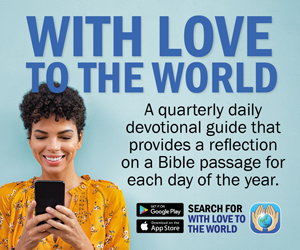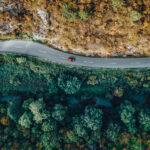Over the past four months, as a society, we have experienced various periods of restrictions: the most severe restrictions in response to the first wave of infections, requiring us to isolate in our homes except for essential matters; then gradual steps in easing those restrictions. And now, in the light of what looks like a second wave, a tightening of restrictions, with perhaps more of that still to come. It has been like a roller coaster ride.
And as a church, we have experienced the change from worshipping and meeting in person, to doing many things by phone, by email, and especially by ZOOM and YouTube. It has been a very significant time of transition—personally challenging, emotionally confronting, and draining of our energy. Yet we are all still moving on in the face of all that we encounter.
In the firm belief that it is helpful for us to keep up with the latest scientific research on COVID-19, I have been collating information about various matters that have drawn the attention of researchers, and produced clear guidance for how we function as we live with the ongoing reality of COVID-19.
On the importance of air circulation
Recently, 239 scientists from 32 different countries and many different areas of science (including virology, aerosol physics and epidemiology) penned an open letter urging the World Health Organisation (WHO) to change their advice relating to the ways that the corona virus spreads. “We ignore COVID-19 airborne spread indoors at our peril,” the scientists wrote.
In summary, the scientists who signed the letter have recommended three key ways to mitigate the risk of airborne transmission of COVID-19:
- Ventilation (maximise clean outdoor air, minimise recirculating air) particularly in public buildings, workplaces, schools, hospitals, and aged care homes
- Airborne infection controls such as local exhaust, high efficiency air filtration, and germicidal ultraviolet lights
- Avoid overcrowding, particularly in public transport and public buildings
These are practical and can be easily implemented and many are not costly.
On the value of wearing masks
The ABC reports that scientific experts say masks are one of the best ways to stop aerosols in their tracks. “Masks stop the virus-laden aerosols exhaled by an infected person entering the indoor space and also protect others from inhaling it,” Professor Lidia Morawska of the Queensland University of Technology said.
Professor Guy Marks, an epidemiologist and respiratory physician at the University of New South Wales, agrees. “If you must spend time in a static environment with a lot of people, consider wearing a mask”, he says.
Physical distancing is insufficient by itself in a crowded, poorly ventilated space where there is rapid air mixing, says aerobiologist Professor Euan Tovey of the University of Sydney. A recent study from an outbreak on the USS Theodore Roosevelt has shown that the best protection from infection in close quarters is a combination of distancing and masks.
However, the type of mask has an effect on protection. While a home-made cotton face mask significantly blocks large droplets, research UK research shows it only blocks a proportion of those tiny aerosolised particles.
Links to specific studies can be found in this article here.
An overview of what is involved in taking good precautions
The World Health Organisation has recently published an up to date guide for how we minimise the risk of infections spreading, in a paper entitled Transmission of SARS-CoV-2: implications for infection prevention precautions (WHO, 9 July 2020)
To prevent transmission, WHO recommends a comprehensive set of measures including:
- Identify suspect cases as quickly as possible, test, and isolate all cases (infected people) in appropriate facilities;
- Identify and quarantine all close contacts of infected people and test those who develop symptoms so that they can be isolated if they are infected and require care;
- Use fabric masks in specific situations, for example, in public places where there is community transmission and where other prevention measures, such as physical distancing, are not possible;
- Use of contact and droplet precautions by health workers caring for suspected and confirmed COVID-19 patients, and use of airborne precautions when aerosol generating procedures are performed;
- Continuous use of a medical mask by health workers and caregivers working in all clinical areas, during all routine activities throughout the entire shift;
- At all times, practice frequent hand hygiene, physical distancing from others when possible, and respiratory etiquette;
- avoid crowded places, close-contact settings and confined and enclosed spaces with poor ventilation; wear fabric masks when in closed, overcrowded spaces to protect others;
- and ensure good environmental ventilation in all closed settings and appropriate environmental cleaning and disinfection.
Over the past four months, as a society, we have experienced various periods of restrictions: the most severe restrictions in response to the first wave of infections, requiring us to isolate in our homes except for essential matters; then gradual steps in easing those restrictions. And now, in the light of what looks like a second wave, a tightening of restrictions, with perhaps more of that still to come. It has been like a roller coaster ride.
And as a church, we have experienced the change from worshipping and meeting in person, to doing many things by phone, by email, and especially by ZOOM and YouTube. It has been a very significant time of transition—personally challenging, emotionally confronting, and draining of our energy. Yet we are all still moving on in the face of all that we encounter.
In the firm belief that it is helpful for us to keep up with the latest scientific research on COVID-19, I have been collating information about various matters that have drawn the attention of researchers, and produced clear guidance for how we function as we live with the ongoing reality of COVID-19.
On the importance of air circulation
Recently, 239 scientists from 32 different countries and many different areas of science (including virology, aerosol physics and epidemiology) penned an open letter urging the World Health Organisation (WHO) to change their advice relating to the ways that the corona virus spreads. “We ignore COVID-19 airborne spread indoors at our peril,” the scientists wrote.
In summary, the scientists who signed the letter have recommended three key ways to mitigate the risk of airborne transmission of COVID-19:
- Ventilation (maximise clean outdoor air, minimise recirculating air) particularly in public buildings, workplaces, schools, hospitals, and aged care homes
- Airborne infection controls such as local exhaust, high efficiency air filtration, and germicidal ultraviolet lights
- Avoid overcrowding, particularly in public transport and public buildings
These are practical and can be easily implemented and many are not costly.
This video from a couple of months ago provides a striking demonstration about the way that aerosols operate:
On the value of wearing masks
The ABC reports that scientific experts say masks are one of the best ways to stop aerosols in their tracks. “Masks stop the virus-laden aerosols exhaled by an infected person entering the indoor space and also protect others from inhaling it,” Professor Lidia Morawska of the Queensland University of Technology said.
Professor Guy Marks, an epidemiologist and respiratory physician at the University of New South Wales, agrees. “If you must spend time in a static environment with a lot of people, consider wearing a mask”, he says.
Physical distancing is insufficient by itself in a crowded, poorly ventilated space where there is rapid air mixing, says aerobiologist Professor Euan Tovey of the University of Sydney. A recent study from an outbreak on the USS Theodore Roosevelt has shown that the best protection from infection in close quarters is a combination of distancing and masks.
However, the type of mask has an effect on protection. While a home-made cotton face mask significantly blocks large droplets, research UK research shows it only blocks a proportion of those tiny aerosolised particles.
Links to specific studies can be found in this article here.
An overview of what is involved in taking good precautions
The World Health Organisation has recently published an up to date guide for how we minimise the risk of infections spreading, in a paper entitled Transmission of SARS-CoV-2: implications for infection prevention precautions (WHO, 9 July 2020)
To prevent transmission, WHO recommends a comprehensive set of measures including:
- Identify suspect cases as quickly as possible, test, and isolate all cases (infected people) in appropriate facilities;
- Identify and quarantine all close contacts of infected people and test those who develop symptoms so that they can be isolated if they are infected and require care;
- Use fabric masks in specific situations, for example, in public places where there is community transmission and where other prevention measures, such as physical distancing, are not possible;
- Use of contact and droplet precautions by health workers caring for suspected and confirmed COVID-19 patients, and use of airborne precautions when aerosol generating procedures are performed;
- Continuous use of a medical mask by health workers and caregivers working in all clinical areas, during all routine activities throughout the entire shift;
- At all times, practice frequent hand hygiene, physical distancing from others when possible, and respiratory etiquette; avoid crowded places, close-contact settings and confined and enclosed spaces with poor ventilation; wear fabric masks when in closed, overcrowded spaces to protect others; and ensure good environmental ventilation in all closed settings and appropriate environmental cleaning and disinfection.
John Squires is the Presbytery Minister (Wellbeing) for Canberra Region Presbytery. This piece originally appeared on his blog, An Informed Faith.











